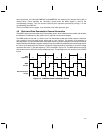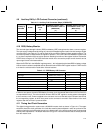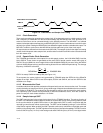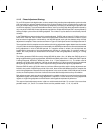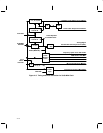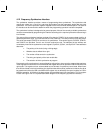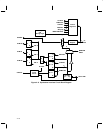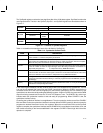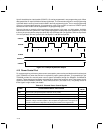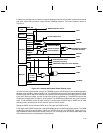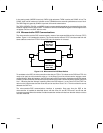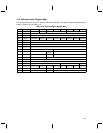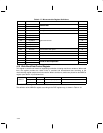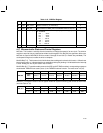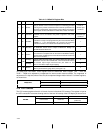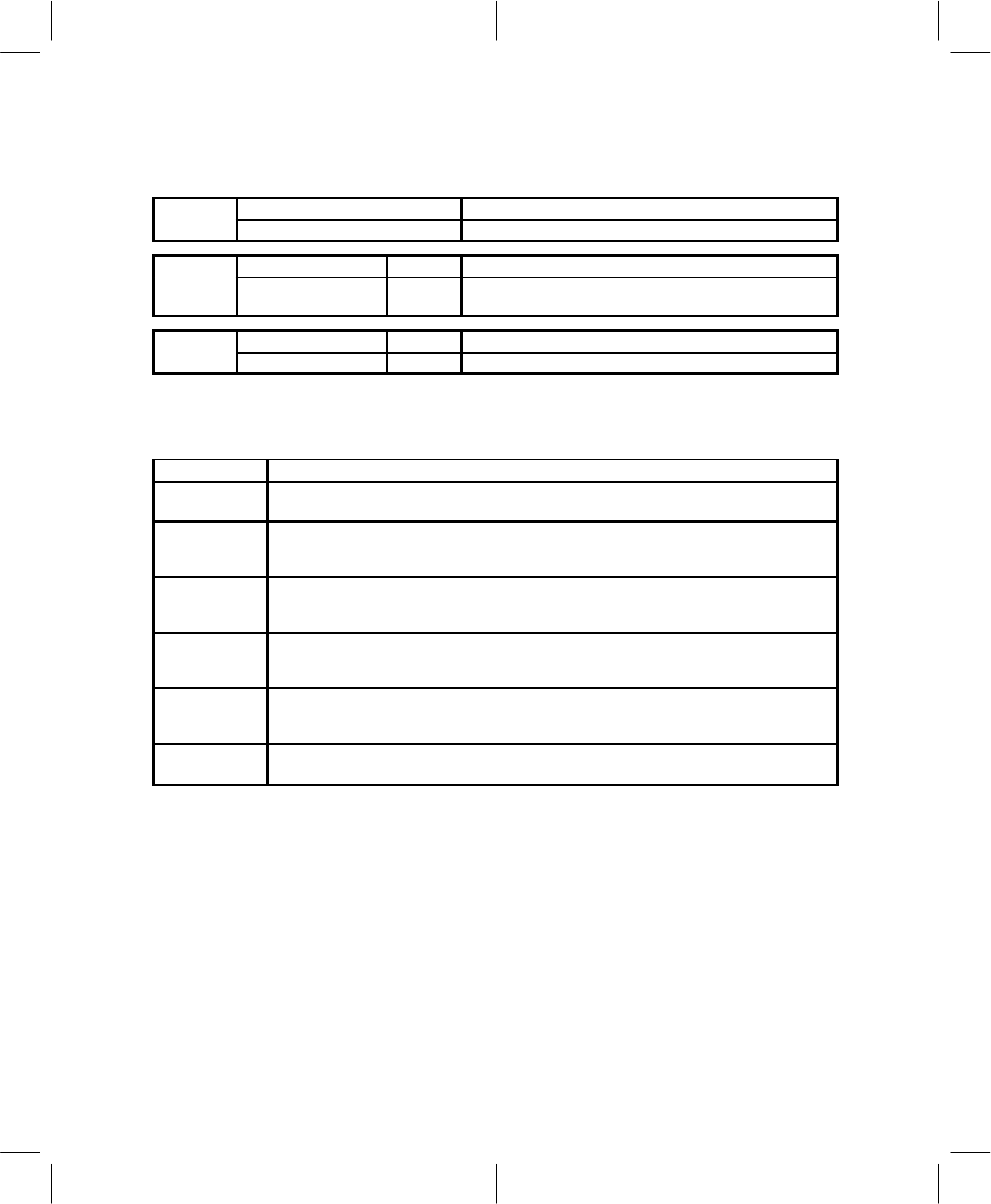
4–17
The SynData0 register contains the least significant bits of the 32-bit data register. SynData3 contains the
most significant bits. The bits in the SynCtrl0, SynCtrl1, and SynCtrl2 registers are allocated as shown in
Figure 4–7.
SynCtrl0
7–5 4–0
S
yn
Ct
r
l0
SEL[2:0] LOWVAL
SCl1
7–6 5 4–0
SynCtrl1
Reserved
MSB/LSB
FIRST
HIGHVAL
SynCtrl2
7–6 5 4–0
S
yn
Ct
r
l2
Reserved CLKPOL NUMCLKS
Figure 4–7. Contents of SynData Registers
Table 4–14 identifies the meaning of each of the bit fields in SynCtrl[2:0].
Table 4–14. Synthesizer Control Fields
NAME DESCRIPTION
CLKPOL This is a 1-bit field. When CLKPOL = 1, the SYNCLK signal is a positive-going, 50% duty cycle
pulse. CLKPOL = 0 reverses the polarity of SYNCLK.
NUMCLKS This 5-bit field defines the total number of clock pulses that are to be produced on SYNCLK. The
value written into NUMCLKS is the desired number of output clock pulses, with one exception:
When 32 clock pulses are desired, all zeroes are written into NUMCLKS.
HIGHVAL This 5-bit field defines when the strobe signal for the selected synthesizer is driven high. HIGHVAL
is the bit number at which the signal changes state. Bits being transferred on SYNDTA are
sequentially designated 0, 1, ... 31, independent of any MSB/LSB selection.
LOWVAL The value written into this 5-bit field affects the strobe signal for the selected synthesizer. LOWVAL
is the bit number at which the strobe signal is driven low. The first bit transferred out of the serial
interface is defined to occur at bit-time 0, independent of any MSB/LSB selection.
MSB/LSB FIRST Writing a 0 to MSB/LSB FIRST causes the LSB (SynData0[0]) to be the first bit sent to SYNDTA
of the serial synthesizer interface. Writing a 1 to this bit programs the block for MSB first operation,
SynData3[7].
SEL[2:0] This is a 3 bit field that selects which synthesizer strobe line is active. A 1 in any of the SELx bits
activates the corresponding latch enable.
In the status register MStatCtrl, two bits, SYNOL and SYNRDY, are dedicated to the synthesizers. The first
is an out-of-lock indicator that comes from the SYNOL input terminal. When the SYNOL input terminal is
connected to the OR of the out-of-lock signals from the external synthesizers, the lock condition of the
synthesizers can be monitored by reading the MStatCtrl register. A high on SYNOL also prevents the PAEN
output from being asserted and forces the TXI and TXQ outputs to zero. The SYNRDY bit, active high,
indicates when the synthesizer interface is idle and ready for programming. When SYNRDY is low, the
synthesizer interface is busy.
Controlling the synthesizer interface is straightforward. The microcontroller checks to see if the SYNRDY
bit is low. When it is low, the synthesizer interface is not ready. When SYNRDY goes high, the microcontroller
programs the desired information into the four registers. When the microcontroller write to the SynCtrl2
register is complete, the synthesizer interface sets the SYNRDY bit low and begins to send data, clock, and
latch enable according to the format established in the registers. SYNRDY returns high when the entire
operation is complete.



